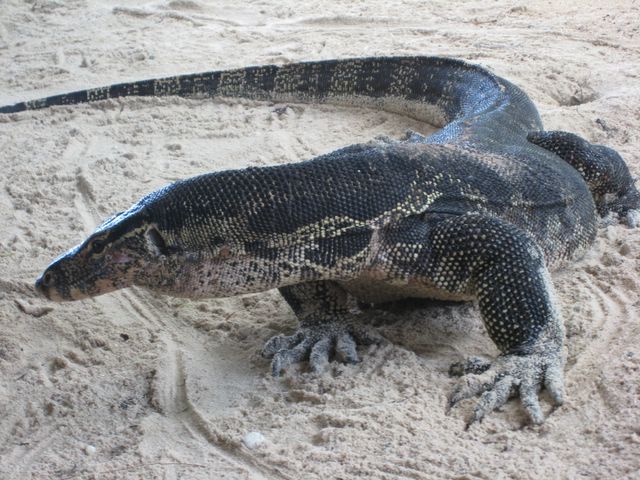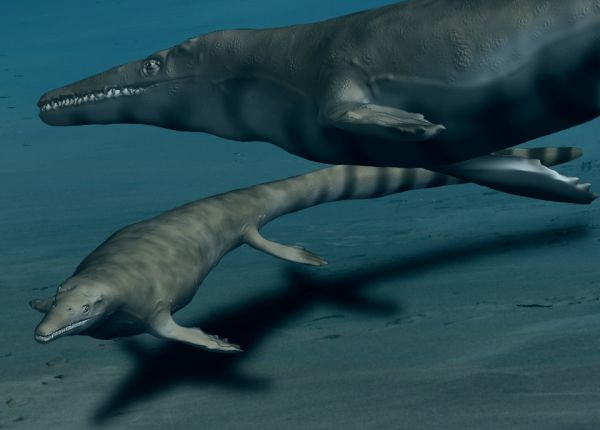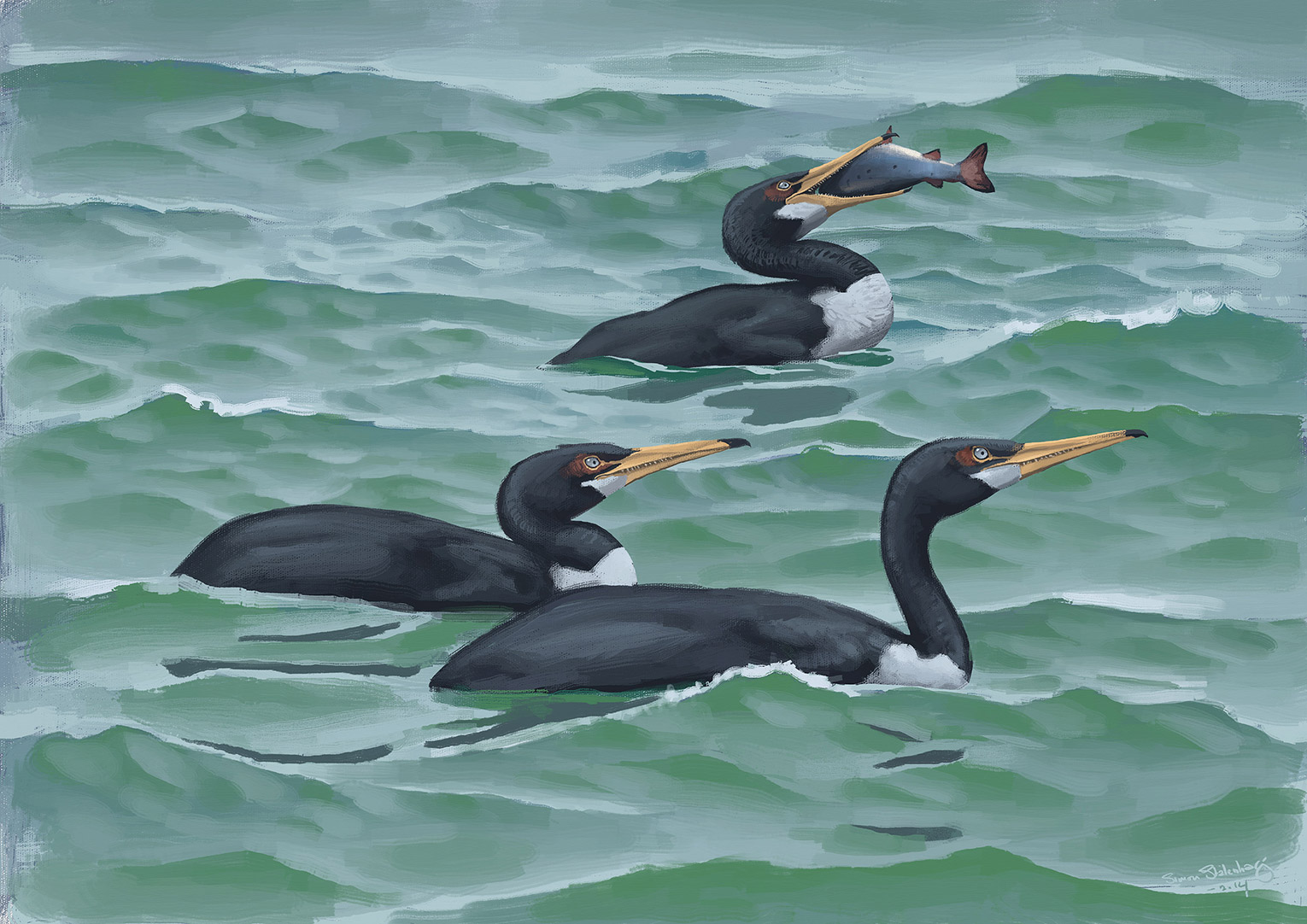Then and now
The first land-dwelling vertebrates that returned to life in the water were some Carboniferous amphibians. Since then, numerous land-dwelling animals have readapted to aquatic life.
Among the land animals that returned to the sea during the Cretaceous were the mosasaurs, large extinct reptiles that are related to the monitor lizards of today. Another development during that period was the evolution of ocean-dwelling birds that resembled penguins.
These prehistoric marine animals had one thing in common with their modern equivalents: they breathed with lungs, just like humans – an indication of their origins as land-dwelling creatures.
Mosasaurs
Mosasaurs were large lizards that could be up to 18 metres long. During the Cretaceous they evolved into water-dwelling animals, related to the monitor lizards of today
Modern monitor lizards are good swimmers that hunt fish and crabs. But they are also well adapted to life on land. They can run fast and climb trees while hunting birds and small rodents.

The monitor lizard are good swimmers, but also well adapted to life on land.
Photo: Thomas Mörs
Mosasaurs swam in roughly the same manner as the monitors of today. However, they were unable to move about on land because their ancestors’ legs had evolved into fins. They were therefore unable to lay their eggs on land. Instead, they gave birth to live offspring.

Mosasaurus swam in roughly the same manner as the monitors of today.
Bild: Nobu Tamura
Birds
Birds were another animal group in which some ocean-dwelling species evolved during the Cretaceous. Hesperornis was the first bird which, in adapting to aquatic life, lost the ability to fly. That occurred some 70 million years after the first birds evolved.

Hesperornis was as the penguins of today adaptic to aquatic life.
Image: Simon Stålenhag
Hesperornis was very similar to the penguins of today, but was much larger. It could be as long as 1.8 metres, the height of many adult humans! Unlike penguins, which swim with their wings, Hesperornis swam with its feet, like modern loons.

